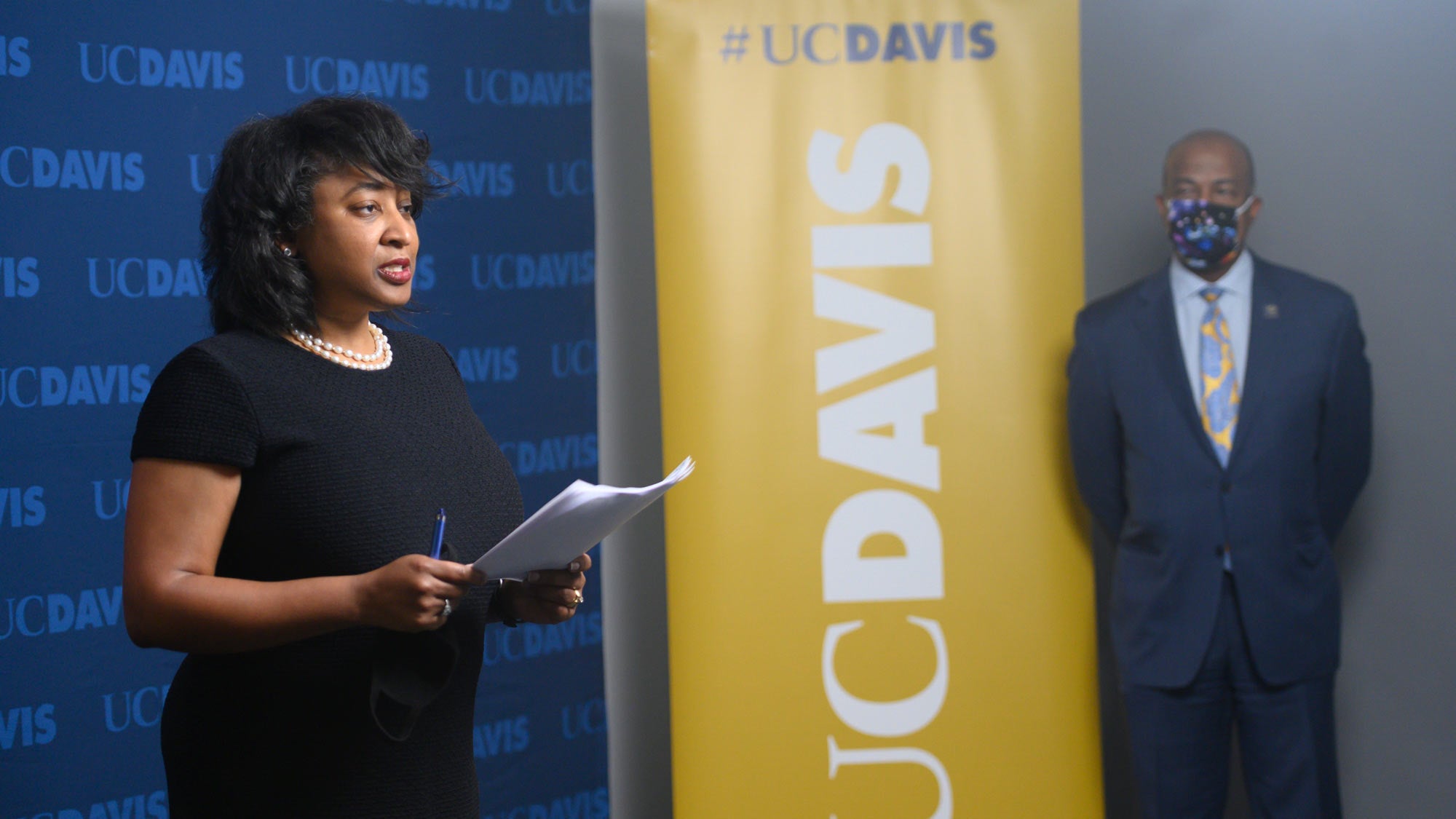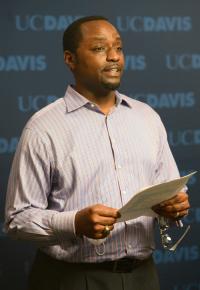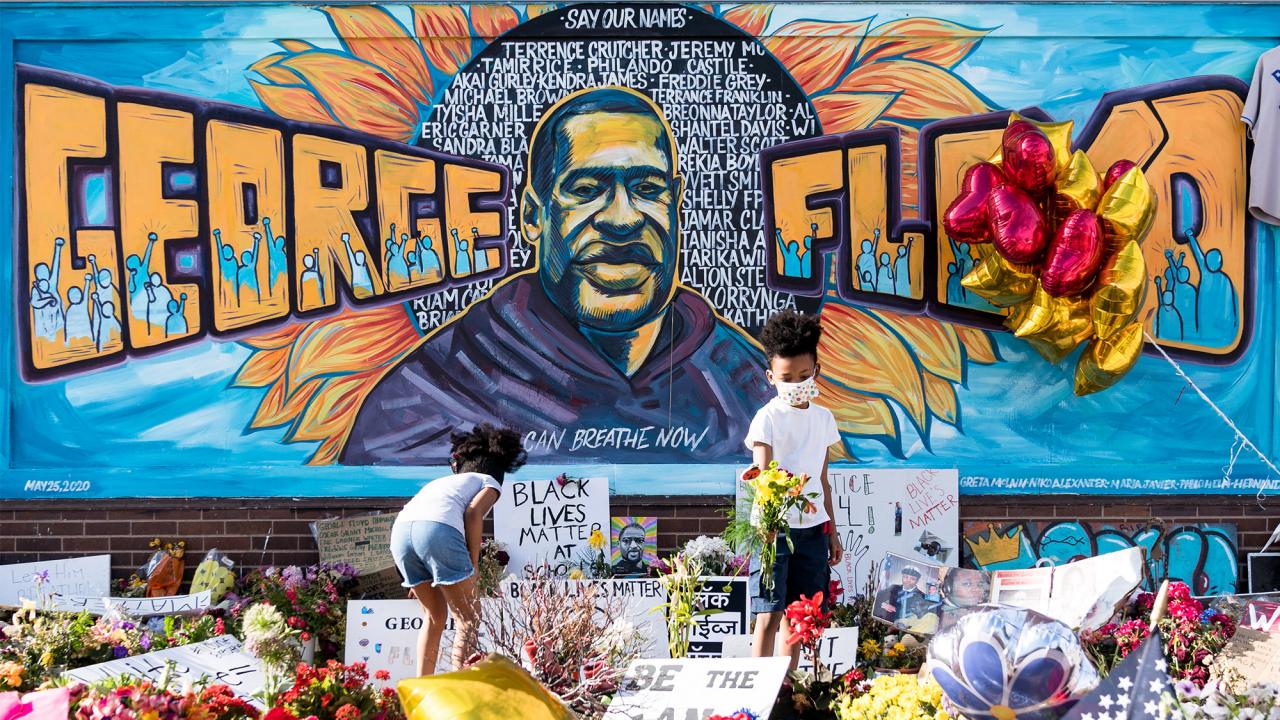Quick Summary
- Campus answers Chancellor May’s call for collective effort
- VC Tull describes a “doubling-down” in programs and other resources
- Departments and units are being recognized for achievements
One year ago today, news of George Floyd’s death in police custody reverberated across the country and around the world, leading to Black Lives Matter protests and, at UC Davis, a strengthening of the university’s commitment to diversity, equity and inclusion.
RELATED CONTENT
“George Floyd’s tragic murder only reaffirmed the need to build an inclusive environment that recognizes and respects people of all backgrounds and experiences,” the chancellor said today (May 25), reflecting on a year of progress in diversity, equity and inclusion at UC Davis. “We were motivated and well positioned to take our DEI efforts to a new level.”
First the campus mourned with a Community Moment of Silence for George Floyd, whose death led to a police officer’s conviction for murder; Breonna Taylor and Stephon Clark and other people of color killed by police; and other victims like Ahmaud Arbery, a Black man who died in a confrontation with two white men who chased him down in an Atlanta suburb.
Chancellor May knew there was hard work ahead. In written and spoken remarks in the days after George Floyd’s death, he said: “Inclusion — like social justice — doesn’t come easily. It requires collective effort. It requires each one of us working to make a difference, whether that’s through getting involved in your community, peaceful protesting or doing what you can to change procedures that reflect bias.”
Campus departments and units took up his call, despite struggling with the pandemic at the same time, putting diversity, equity and inclusion top of mind in mission planning and training.
Strategic Goal 3
UC Davis has long embraced diversity and inclusion in the Principles of Community, adopted in 1990 and updated in 2015 with a prologue acknowledging “that our society carries within it historical and deep-rooted injustices and biases”; in programming from the Office of Campus Community Relations; and in UC Davis’ To Boldly Go strategic plan, adopted under Chancellor May’s leadership in 2018, the year after he arrived.
Strategic Goal 3 states: “Embrace diversity, practice inclusive excellence and strive for equity. Make UC Davis a place of excellence for learning and working by supporting a culture that values the contributions and aspirations of all our students, staff and faculty; promotes wellness and a culture of sustainability; and cultivates the open interchange of ideas.”
A year before the George Floyd killing, Chancellor May established the Office of Diversity, Equity and Inclusion, unifying the Office of Campus Community Relations, Academic Diversity and the Office for Health Equity, Diversity and Inclusion, and appointed Renetta Garrison Tull as the first vice chancellor of DEI.
In one of their first actions after George Floyd’s killing, Vice Chancellor Tull and her team developed their Resources for Racial Trauma webpage, including announcements for readings and racial healing circles, and compilations of ally statements and leadership statements. These resources are now folded into a collection of anti-racism pages, including an Anti-Racism Syllabus and 11 Suggested Actions Toward Anti-Racism.

From allyship to action
All along the way, Vice Chancellor Tull called upon the campus community to “turn allyship into action.” The response has been overwhelming.
“There have been a number of programs that have developed over the last year, in response to George Floyd’s death, but also in recognition of some long-standing issues that still needed to be addressed,” she said. “Schools, colleges and units developed new positions, doubled down on diversity efforts and invested in new programs.”
Graduate Studies developed an Anti-Racism Initiative and held its inaugural symposium earlier this month. The Center for Educational Effectiveness in Undergraduate Education developed several “Workshops on Demand” to address issues such as “Foundations of an Anti-Racist Pedagogy” and “Beyond 101: Addressing Racism and Microaggressions in the Classroom.”
DEI added more Diversity Courses such as “Unpacking Oppression,” and faculty and staff came together to offer their own sourced resources and solutions such as the UC Davis STEM Faculty Resource Guide for Faculty Starting to Learn About Equity, Inclusion, Justice and Anti-Racism, as they taught and worked through the pandemic.
Read more: “UC Davis Documents Strategic Investments in Diversity, Equity and Inclusion”
Next-generation campus safety
The chancellor took on the issue of policing by establishing the UC Davis Task Force on Next Generation Reforms to Advance Campus Safety.
“As law enforcement departments across the country are scrutinized — and justly so — for how they respond to and interact with others, I’m calling on our community to come together and examine what we can do to improve our community policing,” the chancellor said in his charge letter to the task force, headed by Vice Chancellor Tull and the law school dean, Kevin Johnson.
The task force convened 11 forums for a variety of constituencies, including undergraduates and graduate students, staff and faculty, students of the School of Medicine and the Betty Irene Moore School of Nursing, and international students, and released eight initial recommendations.
A final report from the task force is due in June.
Faculty and staff diversity
To improve faculty diversity, the university provides training to all those involved in recruitment and hiring.
UC Davis has trained more than 1,300 faculty members on implicit bias and best practices for new faculty recruitment, via a faculty-led program called Strength Through Equity and Diversity, or STEAD. At UC Davis Health, Supporting Educational Excellence in Diversity, or SEED, teaches faculty and instructors how to apply cultural humility and how to identify microaggressions that can impede learning.
Further, the university requires all applicants to submit statements on how they will contribute to diversity, equity and inclusion.
Here’s another strategy: FRIENDS, which stands for Faculty Retention and Inclusive Excellence Networks — Designing Solutions, organized by faculty themselves in response to the COACHE Faculty Satisfaction Survey of 2018.
In addition, the 2020 UC-Coro Systemwide Leadership Collaborative Northern California Cohort — including UC Davis faculty and staff — devised an Anti-Racism Learning and Reflection Tool as part of the cohort’s “Imagining an Anti-Racist UC” project.
‘Beyond the moment’

Kayton Carter, executive director of Academic Advising Enrichment, one of three campus leaders who led the moment of silence last year, implored the livestream audience that day to go “beyond the moment.”
Departments and units have done so. In fact, three such efforts recently received Chancellor’s Achievement Awards for Diversity and Community:
- Safety Services — For its continuing commitment to diversity, equity and inclusion, including more frequent educational opportunities on topics that include microaggression and implicit bias, and creating structures to sustain such efforts over the long term.
- MIND Institute — For actively pursuing a DEI transformation for the institute as a whole and for its RISE-UP program, in which undergraduate students from underrepresented groups receive mentoring to become researchers.
- Mondavi Center for the Performing Arts — For applying a DEI lens to the development of a new mission statement, vision and strategic plan to take the center into its 20th anniversary year in 2022.
Similarly, the Jan Shrem and Maria Manetti Shrem Museum of Art used its yearlong closure as an opportunity to deeply examine issues of diversity, equity and inclusion in every aspect of its operation.
The IDEA: A new center
A significant update that occurred over the last year was the soft launch of a new center within Diversity, Equity and Inclusion: IDEA, the Institute for Diversity, Equity and Advancement. The IDEA supports programs, projects and research related to diversity and equity at UC Davis, and Faculty Director Rachel Jean-Baptiste is leading a foundational research project that will address anti-Blackness.
The IDEA website states the center is uniquely situated to centralize the efforts of DEI-related research, to analyze metrics, scale promising practices and broadly disseminate outcomes. From hard conversations the center will promote action that is “poised to shape the future of education and opportunity at UC Davis and throughout higher education.”
Looking back a year, Vice Chancellor Tull acknowledged, “For many, trauma continues, but as a campus, we are going to continue to work hard — every single day — to put our principles into action. This is a must.
“As we remember George Floyd, who died so unnecessarily, we must also be purposeful in making sure that social justice is in place for all, to give the best of life to those who are here now, and to prepare the way for the generations to come.”
Media Resources
Dateline Staff: Dave Jones, editor, 530-752-6556, dateline@ucdavis.edu; Cody Kitaura, News and Media Relations specialist, 530-752-1932, kitaura@ucdavis.edu.
